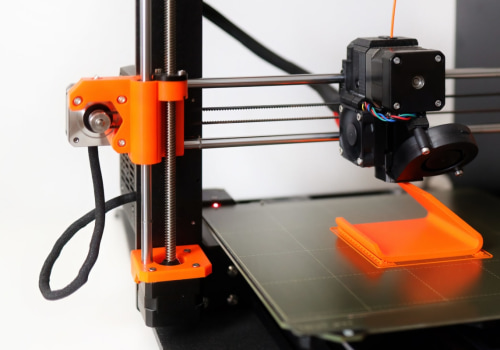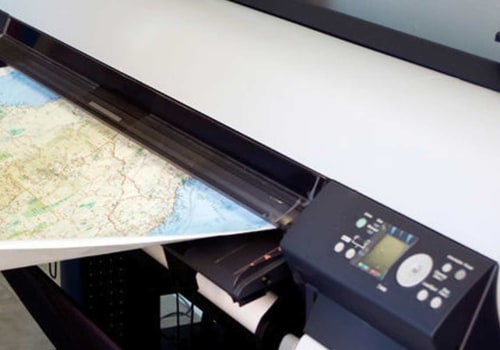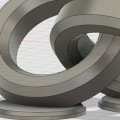Digital printing is a revolutionary process that has revolutionized the printing industry, allowing for faster and more efficient production. It has replaced traditional printing techniques such as lithography, flexography, and screen printing with its high-resolution, cost-effective and environmentally friendly approach. With digital printing, businesses can produce anything from advertising materials to banners to business cards quickly and at a low cost. This article provides a comprehensive overview of digital printing, its advantages, and how it can help businesses succeed. Digital printing offers flexibility with short turnaround times, custom designs, and individualized products.
It also allows businesses to produce higher quality prints with vivid colors and sharp details. Additionally, the cost-effectiveness of digital printing makes it a popular choice for businesses of all sizes. This article will explore the benefits of digital printing, the different types available, and the common applications for it. Whether you are a business owner looking for a reliable printing solution or a creative looking to make an impact with vibrant designs, digital printing is a great option. Read on to learn more about this amazing process. Digital printing is a modern printing method that has revolutionized the printing industry.
It offers a faster turnaround time and often produces more vibrant and accurate results than traditional printing techniques. In digital printing, a computer is used to create images directly onto the print material, without the need for printing plates or screens. This makes digital printing a cost-effective and efficient option for businesses, as it eliminates the need for costly pre-press production.
Advantages of Digital Printing
The primary advantage of digital printing is its cost-effectiveness. Digital printing requires fewer resources than traditional printing methods, making it a more affordable option for businesses.It also offers faster turnaround times, which can be beneficial when businesses need to produce large quantities of printed materials in a short amount of time. Additionally, digital printing produces more accurate colors and higher resolution images than traditional printing methods.
Disadvantages of Digital Printing
Despite its many advantages, digital printing does have some potential drawbacks. One is that it may not be able to accurately reproduce certain colors, such as metallics and spot colors. Additionally, digital printing may not be able to achieve the same level of detail as traditional printing methods.The resolution of digital prints can also be lower than that of offset prints.
Types of Digital Printing
There are two main types of digital printing: inkjet and laser printing. Inkjet printers use liquid ink that is sprayed onto the print material, while laser printers use toner powder that is fused onto the material with heat. Both types of digital printing are capable of producing high quality prints, but inkjet printers are generally more cost-effective.Digital Printing Processes
The two main processes used in digital printing are direct-to-garment (DTG) and direct-to-plate (DTP). DTG involves printing directly onto fabric or apparel using specialized inks and equipment.DTP involves creating plates for each color needed for a print job, which are then used to transfer the image onto the print material.
Digital Printing Technology
Digital printing technology has advanced considerably in recent years. The most commonly used technologies include UV curing, which uses ultraviolet light to dry ink quickly and produce vibrant colors; and variable data printing (VDP), which allows for the customization of printed materials on an individual basis.Applications of Digital Printing
Digital printing can be used for a variety of applications, including wide format signage, packaging, business cards, brochures, labels, and banners. It can also be used to produce fine art prints, as well as promotional items such as mugs and t-shirts. Digital printing is ideal for businesses that require high quality prints in short turnaround times.Conclusion
Digital printing is a modern printing method that offers cost savings, faster turnaround times, and higher quality results than traditional printing techniques.It is suitable for a wide range of applications, from wide format signage to fine art prints. Additionally, new technologies such as UV curing and variable data printing allow for even greater customization and accuracy when producing printed materials.
Disadvantages of Digital Printing
Digital printing, while offering many advantages over traditional printing techniques, does have some drawbacks that must be taken into consideration when deciding whether or not it is the right choice for your project. One of the main drawbacks is the limited color range that digital printing offers. While traditional printing methods, such as offset lithography, can produce a wide range of colors, digital printing is limited to the four-color CMYK (cyan, magenta, yellow, and black) color gamut.This means that certain colors may not be accurately reproduced using digital printing. Additionally, digital prints can be prone to resolution issues, as they are limited by the resolution of the printer. Finally, specialized equipment is often necessary for digital printing, making it more expensive than other traditional printing methods.
Digital Printing Processes
Direct-to-Garment (DTG) PrintingDirect-to-garment (DTG) printing is a digital printing method that uses specialized inkjet printers to print designs directly onto fabric. This process allows for complex images and detailed designs to be printed directly onto shirts and other garments.DTG printing is used for both small and large batches, making it a popular choice for businesses and individuals alike.
Direct-to-Plate (DTP) Printing
Direct-to-plate (DTP) printing is a digital printing method that uses specialized laser printers to transfer designs directly onto metal plates. This process is often used for printing large volumes of items such as books, magazines, and brochures. DTP printing can produce high-quality images with a wide range of color options and is often used for commercial printing.Other Digital Printing Processes
In addition to DTG and DTP printing, there are several other digital printing processes that are used in the industry. These include inkjet, dye-sublimation, and electrostatic printing.Each of these methods has its own advantages and disadvantages depending on the application.
Applications of Digital Printing
Digital printing has become a popular choice for a wide range of applications such as wide format signage and packaging due to its convenience, accuracy, and quick turnaround times. It is especially useful for short runs of prints with intricate details, allowing businesses to customize their output and produce high-quality prints quickly and efficiently. Wide format signage is one of the most popular applications of digital printing. The technology allows large-scale signage to be printed quickly and accurately, and offers businesses the opportunity to create high-impact promotional materials that are eye-catching and memorable. Digital printing can also be used to produce packaging, including labels, boxes, and other products.Digital printing offers flexibility in terms of design, allowing businesses to customize their packaging with unique colors, textures, and shapes. Digital printing is also an ideal choice for producing marketing materials such as flyers, brochures, and business cards. With digital printing, businesses can print large runs of materials quickly and easily, allowing them to get their message out in a timely manner. Digital printing can also be used for personalized direct mail campaigns, which can help businesses target specific customers with tailored messages.
Advantages of Digital Printing
Digital printing has become increasingly popular due to its many advantages over traditional printing techniques.Digital printing offers cost savings, faster turnaround times, and higher quality results compared to traditional methods. The first benefit of digital printing is cost savings. Digital printing does not require the use of plates, films, and other printing-related materials which makes the cost of producing the final product significantly lower than traditional printing methods. In addition, digital printing can produce smaller runs of prints at a fraction of the cost of traditional methods. The second advantage of digital printing is faster turnaround times. Digital printing does not require the extensive setup and preparation time that traditional printing does.
This makes it possible to produce prints in a much shorter amount of time, allowing businesses to get their products to market more quickly. The third benefit of digital printing is higher quality results. Digital printing has the ability to produce vibrant, accurate colors and crisp, clean lines that are often difficult to achieve with traditional methods. Furthermore, since digital prints are produced on demand, they can be customized to meet the needs of individual customers. Overall, digital printing offers many advantages over traditional methods that make it an attractive option for businesses looking to produce high-quality prints in a shorter amount of time and at a lower cost.
Types of Digital Printing
Digital printing is an ever-evolving technology with a variety of methods and applications. The two main types of digital printing are inkjet and laser printing.Each type has its own advantages and disadvantages, depending on the needs of the user.
Inkjet printing
Inkjet printing uses ink droplets to create an image on the page. It is a non-contact method, meaning that the print head never actually touches the paper. Inkjet printers are known for their lower cost, easy setup and maintenance, and versatility. Inkjet printers are also capable of printing on a wide variety of materials, such as paper, cardstock, fabric, vinyl, and even canvas.Laser printing
Laser printing uses a laser beam to create an image on the page.This method is more expensive than inkjet printing but produces higher-quality images with higher resolution. Laser printers are usually faster than inkjet printers and are better suited for high-volume printing tasks. They are also more reliable, as they do not require frequent maintenance or calibration. No matter which type of digital printing you choose, it is important to understand the advantages and disadvantages of each to ensure that you get the best results for your project.
Digital Printing Technology
Digital printing technology has revolutionized the way we print. While traditional printing techniques like offset printing rely on plates and other mechanical processes to create the desired results, digital printing technologies offer a more efficient and cost-effective solution.A variety of digital printing techniques are available, each with its own advantages and disadvantages. UV Curing is a type of digital printing that uses ultraviolet light to dry and cure inks, coatings, and adhesives. This type of digital printing is fast and cost-effective, and is often used to produce high-quality prints on a variety of surfaces. Variable data printing (VDP) is another type of digital printing technology.
VDP allows users to customize their prints by changing the content of each document on the fly. This makes it possible to create personalized prints for each customer or recipient without having to reprint the entire batch. Digital printing technologies are becoming increasingly popular for their ability to produce high-quality prints quickly and cost-effectively. By investing in the right digital printing technology, businesses can save time, money, and improve their bottom line. In conclusion, digital printing is a versatile, modern printing method that can be used for a wide range of applications. It offers a number of advantages over traditional printing methods, such as faster turnaround times, cost savings, and higher quality results.
However, there are some potential drawbacks to consider, such as limited color range and resolution issues. Digital printing is an excellent choice for many types of projects and can be used to create vibrant and accurate results.











Leave Message